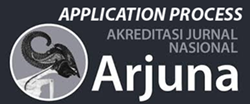Accountability and Financial Management of Mosques Based on ISAK 35 Concerning Financial Reporting of Non-Profit Organizations: Case Study at Al-Ikhlas Mosque
DOI:
https://doi.org/10.59653/jbmed.v1i03.212Keywords:
Accountability, Mosque Financial Management, ISAK 35, Non-Profit Organizations, Financial Reporting.Abstract
This study aims to find out how accountability for financial management exists at the Al-Ikhlas mosque and to find out how it conforms to ISAK 35 regarding financial reporting of non-profit organizations. The method used in this research is descriptive qualitative research method. Data collection techniques used are observation, interviews, and documentation. According to ISAK 35, the financial statements of non-profit entities include statements of financial position, statements of comprehensive income, statements of cash flows and notes to financial statements. With good cash management, we can provide information to donors and other interested parties. The results of this study indicate that financial management at the Al-Ikhlas Mosque is still not in accordance with ISAK 35 standards, and the recording carried out by mosque administrators is still simple, namely recording income and expenses which are presented every Friday manually. The accountability process, which in this case is the process of disclosing to the congregation, is still not maximally detailed, only conveying the amount of income and expenses without clear details. Even so, the mosque parties have tried to make the best possible disclosure. This is because the management of the mosque does not know the financial recording system based on ISAK 35.
Downloads
References
Aisyah, N. (2019). AKUNTABILITAS PADA PENGELOLAAN KEUANGAN MASJID AGUNG LAMONGAN MENURUT PSAK 45 TENTANG PELAPORAN KEUANGAN ORGANISASI NIRLABA.
Angelia, N., & & Rudy J. P. (2018). Penerapan Laporan Keuangan Organisasi Nirlaba Berdasarkan PSAK No.45 pada Panti Sosial Tresna Werdha Hana. Jurnal Riset Ekonomi, Manajemen, Bisnis Dan Akuntansi, 2(1), 1–8. https://e-jurnal.stienobel-indonesia.ac.id/index.php/akmen/article/view/196
Damin, M., & Mustaqim, F. (2021). Akuntabilitas Pengelolaan Keuangan Masjid melalui Pendekatan Fenomenologi (Studi Empiris pada Masjid Al-Hijrah dan Masjid As-Syakur Desa Mantowu). Entries: Jurnal; Ilmiah Mahasiswa Fakultas Ekonomi UM Buton, 3, 276–288. http://www.jurnal-umbuton.ac.id/index.php/entries/article/view/2168
Harahap, Z. (2020). PENERAPAN ISAK 35 TENTANG PENYJIAN LAPORAN KEUANGAN ENTITAS BERIORENTASI NONLABA (Studi Kasus Pada Rumah Tahfidz AL-Qur’an Amanah Medan) (Vol. 21, Issue 1). http://journal.um-surabaya.ac.id/index.php/JKM/article/view/2203
Iyah. (2021). AKUNTABILITAS PENGELOLAAN KEUANGAN MASJID BERDASARKAN PSAK 45 TENTANG PELAPORAN KEUANGAN ORGANISASI NIRLABA (Studi pada Masjid Raya Darussalam Palangka Raya).
Khairaturrahmi, & Ibrahim, R. (2018). Akuntabilitas dan Transparansi Pengelolaan Keuangan Masjid di Kota Banda Aceh. Jurnal Ilmiah Mahasiswa Ekonomi Akuntansi (JIMEKA), 3(1), 111–119.
Noviana, A. (2019). Akuntabilitas dan Transparansi dalam Pengelolaan Keuangan Masjid Melalui Pendekatan Fenomenologi Pada Masjid Al-Muqorrobin di Desa Pinggirpapas. Skripsi Fakultas Ekonomi Dan Bisnis Universitas Wiraraja Sumenep, 1–18.
Nuramalina. (2021). Akuntabilitas Pada Pengelolaan Keuangan Masjid Melalui Pendekatan Fenomenologi (Studi Empiris Pada Masjid Agung Bakrie Kisaran). In Skripsi.
Nurjannah. (2018). AKUNTABILITAS PENGELOLAAN KEUANGAN MASJID: PSAK NO. 45 TENTANG PELAPORAN KEUANGAN ORGANISASI NIRLABA (StudiPadaMasjid Al-Markaz Al-IslamiJenderal M. Jusuf). http://repositori.uin-alauddin.ac.id/8775/
Putra, A., & Rumondor, P. (2019). Eksistensi Masjid Di Era Rasulullah Dan Era Millenial. Tasamuh, 17(1), 245–264. https://doi.org/10.20414/tasamuh.v17i1.1218
Ramadhan Riza. (2002). Akuntabilitas Dan Pengelolaan Keuangan Di Lembaga Masjid. Progres Conferance, 5(: 2622-304X), 312–322. http://proceedings.itbwigalumajang.ac.id/index.php/progress
Downloads
Published
How to Cite
Issue
Section
License
Copyright (c) 2023 Dhetia Putri Siregar, Andri Soemitra, Juliana Nasution

This work is licensed under a Creative Commons Attribution-ShareAlike 4.0 International License.
Authors who publish with this journal agree to the following terms:
- Authors retain copyright and grant the journal right of first publication with the work simultaneously licensed under a Creative Commons Attribution-ShareAlike that allows others to share the work with an acknowledgement of the work's authorship and initial publication in this journal.
- Authors are able to enter into separate, additional contractual arrangements for the non-exclusive distribution of the journal's published version of the work (e.g., post it to an institutional repository or publish it in a book), with an acknowledgement of its initial publication in this journal.
- Authors are permitted and encouraged to post their work online (e.g., in institutional repositories or on their website) prior to and during the submission process, as it can lead to productive exchanges, as well as earlier and greater citation of published work (See The Effect of Open Access).





























